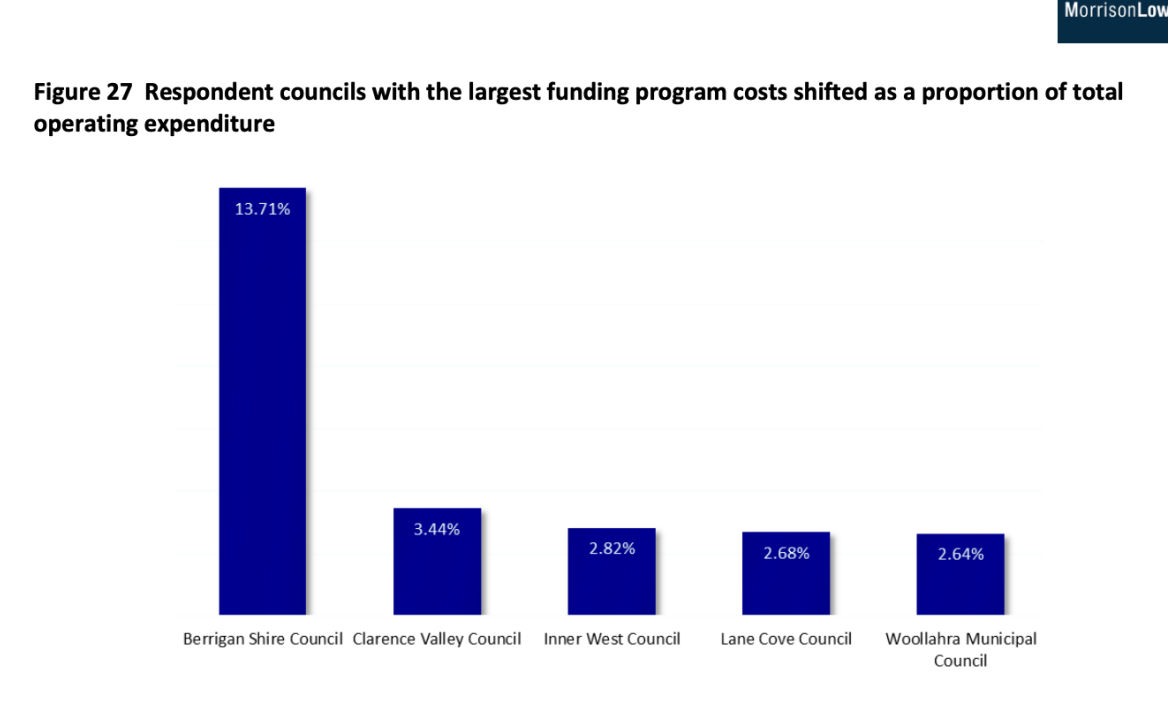What is Cost Shifting?
Cost shifting is when state or federal governments transfer, or ‘shift’, responsibility for providing a certain service, concession, asset or regulatory function to councils.
Cost shifting is a significant problem faced by councils in NSW.
Cost shifting forces local councils to fund more infrastructure and services, without additional corresponding revenue.
Generally, State and Federal Governments shift costs without consulting local councils.
Local Government NSW (LGNSW) has found that local government ratepayers are funding more than a billion dollars of State Government obligations, according to the 2021-22 Cost Shifting Survey.
The respected consulting firm Morrison Low conducted the 2021-22 Cost Shifting Survey. The report has revealed that cost shifting totalled $1.36 billion in 2021-22, far exceeding historical records and representing an increase of $540 million since the Cost Shifting Survey was last carried out in 2017-18.
Local Councils are Piggy Banks According to LGNSW
Local Government NSW, Cr Darriea Turley AM, said the findings of the report are alarming and should shock every ratepayer.
“It’s just not acceptable for the State Government to use local councils as a piggy bank for State programs and services,” Cr Turley said.
“This is effectively a $1.36 billion dollar tax on every ratepayer in NSW.
“At a time when councils are still rebuilding after the natural disasters of the past few years, the last thing they need to be doing is paying for State Government obligations too.”
Cost Shifting Areas
The increase in cost shifting has been accelerated by various State Government policies, with the most significant examples of cost shifting in 2021-22 being:
- The waste levy, which remains the largest single contributor to cost shifting in NSW, totalling $292.9 million.
- The Emergency Services Levy and associated emergency service contributions, which totalled $165.4 million and represented the largest direct cost shift to local councils.
- The NSW Government’s failure to fully reimburse local councils for mandatory pensioner rate rebates, resulting in councils losing $55.2 million.
- The NSW Government’s failure to cover the originally committed 50 per cent of the cost of libraries, resulting in an additional $156.7 million in costs to councils.
Cr Turley said the cost shift amounted to a rate burden of $460.67 on every ratepayer in NSW which is up to 50 percent of their total rates bill in some local government areas.
Lane Cove Named As One of the Hardest Hit Councils
Councils hardest hit include Berrigan Shire Council in the Southern Riverina, Clarence Valley in the state’s north, and Inner West, Lane Cove and Woollahra councils, all in Sydney.

Waste Levy
The waste levy was imposed to discourage landfill disposal and promote the reduction in the use of materials and the re-use, recovery or recycling of materials in New South Wales.
Revenue from the waste levy was to be returned bo local governments to assist in running circular economy initiatives. NSW Local councils have extensively criticised the waste levey and argue benefits aren’t flowing back to them and have aksed for the system to be overhauled.
Emergency Services Levy
After the 2022/2024 Lane Cove Council budget was released earlier this year, Lane Cove Council was hit with a higher-than-expected Emergency Services Levy (ESL).
The ESL is a cost imposed on councils and the insurance industry to fund the emergency services budget in NSW. The majority is paid as part of insurance premiums, with a further 11.7 per cent picked up by councils and 14.6% by the State Government itself.
A Lane Cove Council spokesperson told ITC:
“Lane Cove Council has just received advice that the Emergency Services Levy (ESL) payable for 2023/24 will be $1,186,681 which is a $224,207 (23%) increase on the 2022/23 figure of $962,474.
You can read more about the ESL here.
Library Funding
Lane Cove Council runs 3 libraries. The Lane Cove library has one of the highest loan rates in NSW.
The result of cost-shifting is that rates must be spread further.















